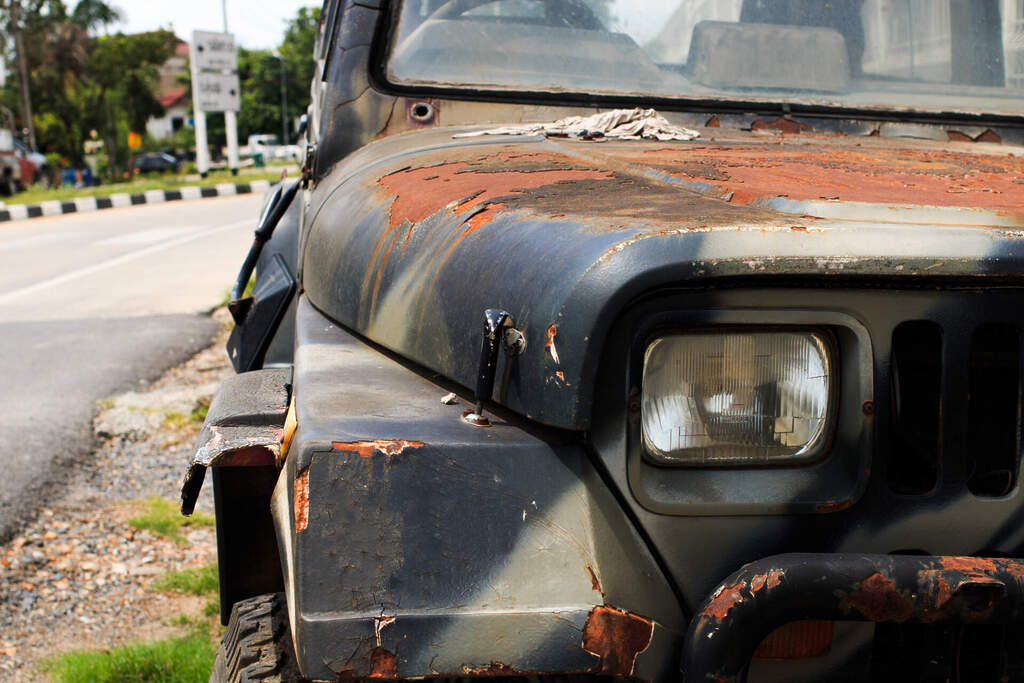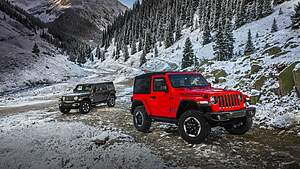Jeep Rust Warranty
Also known as the Anti-Corrosion Perforation Warranty, the Jeep Rust Warranty has the option of either 3 years and unlimited mileage. In previous model years, the Jeep Rust Warranty covered up to 5 years with unlimited mileage.
What Does It Cover?
The Jeep Rust Warranty covers the cost of the parts and labor needed to repair or replace the damaged areas. Scratches and chips in the paint due to other damage is not included in this warranty. This warranty covers holes that are a result of corrosion and rust, not minor cosmetic issues. If the rust on your Jeep isn’t covered, you may face a sizable bill to remove it and patch the affected area.
How Long Does My Jeep Rust Warranty Last?
For sheet metal panels, the limit is 3 years with unlimited miles. For an outer body panel, a finished and painted one that’s visible, the limit is 5 years or 100,000 miles. The good thing about these is that you can always get an Extended Warranty on your vehicle. Although it doesn’t cover rust, a Jeep Extended Warranty can help you with the routine upkeep and maintenance on your vehicle past your original warranty.
Additionally, some Dealers offer paint protection on new cars that generally comes with an extended rust Warranty, such as Ziebart. Ziebart locations are primarily in the Midwest. There are other options to Ziebart such as PROFleetCare. This company is completely mobile and can treat your vehicle at your chosen location.
How To Prevent Rust
If you want to avoid the hassle of getting your vehicle fixed due to rust, then you should do your best to prevent it! Taking care of your vehicle and using these tips are the best ways to prevent rusting.
- Wash Your Jeep. One of the easiest ways to prevent rust is by washing your Jeep often. Leaving dirt or salt on your vehicle can damage the clear coat and paint and expose your car to the elements, causing rust. Bird droppings can also cause damage if you leave it on your vehicle, it is acidic and will break down the paint and clear coat.
- Keep The Interior Clean. If you spill a drink in your car and don’t clean up the liquid, it can seep into the carpet and give the potential for rust. You have to be sure to take care of your vehicle in every circumstance.
- Make Sure Your Paint Job Isn’t Damaged. Paint and clear coat provides protection against the elements, and as soon as there is damage to it, your Jeep becomes exposed. If the area with damaged or chipped paint is exposed to water, it’s likely that area will start to rust if not taken care of properly.
- Watch Where You Park. When you park your car on grass, dirt, snow or flooded surfaces it increases your risk of rust forming due to the amount of moisture that’s in those areas.
- Repair Before It Spreads. As soon as you notice a rust spot forming on your vehicle, you should take it to be repaired. If you ignore it and don’t fix it, the rust spot will continue to spread and cause more damage do your Jeep. Which will cost you more money in the long run.
What Are The Different Kinds Of Rust?
It’s good to know what to look out for if you’re trying to prevent rust from occurring. Rust stands for “Red Dust” after its color and texture. It happens when iron comes into contact with water and oxygen, it goes through a process called oxidation.
- Surface Rust. Surface rust occurs when the paint and clear coat get broken down over time. They can be broken down from excess sunlight, scrapes and dents. Surface rust can sometimes be removed by sanding the affected area.
- Bubble Rust. This happens when surface rust is left untreated. The surface rust expands and flakes creating “scales” and exposing the metal underneath. You can remove bubble rust the same as surface rust, but you’ll first have to use a wire brush the get the rough scales off.
- Corrosion. Corrosion is caused by leaving the rusted area of your vehicle untreated. After the bubble rust continues create scales, pieces of the metal will flake off and create holes in your vehicle. At this point you will most likely have to replace the panel or cut out the corroded areas and weld patches onto the area.





